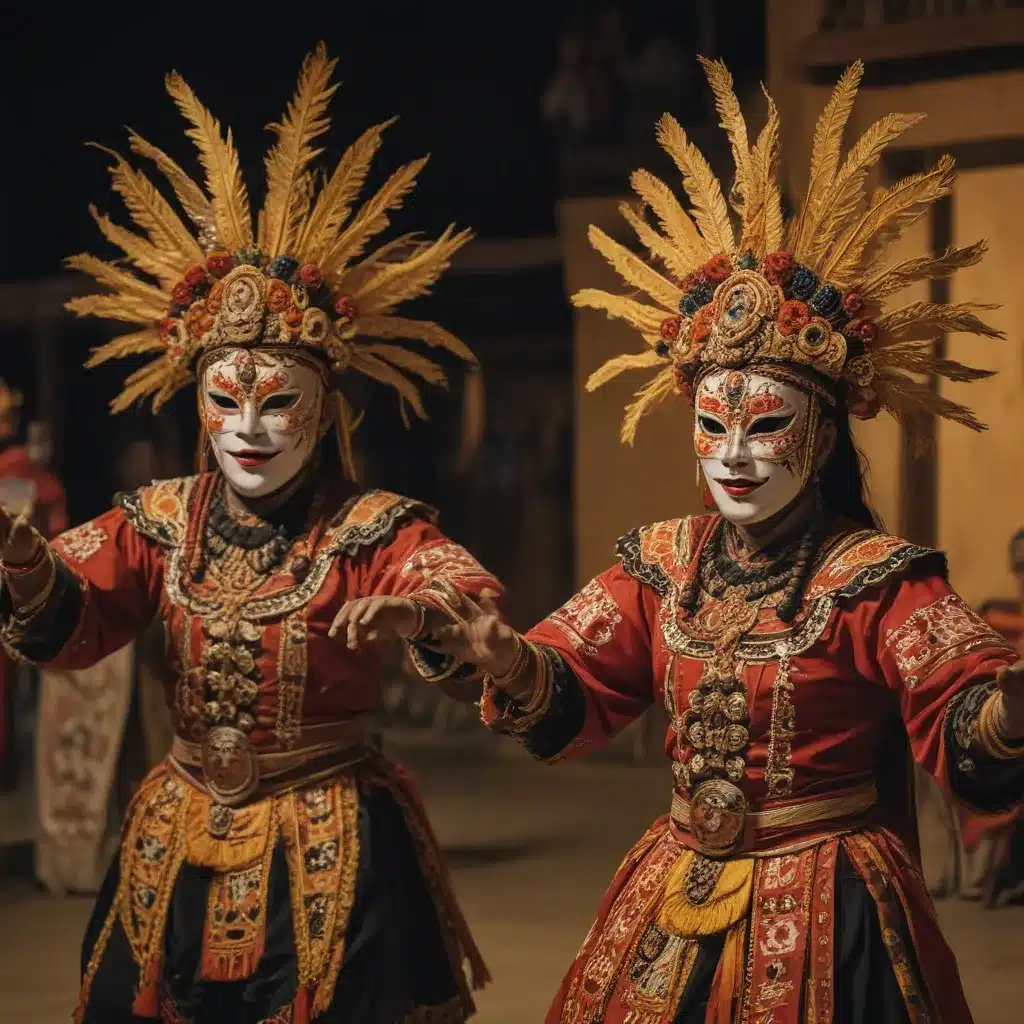
The Captivating World of Korean Mask Dance
As I stepped into the vibrant streets of Seoul, the air was thick with an intoxicating blend of modernity and ancient traditions. Amidst the towering skyscrapers and neon-lit billboards, I caught glimpses of a cultural tapestry that had been woven over centuries, waiting to be unraveled. It was during my exploration of this captivating city that I discovered the enchanting world of Korean mask dance performances.
Unveiling the Mask Dance Tradition
My journey began at the historic Myeongdong Cathedral, where the sound of rhythmic drums and the sight of colorful masks immediately piqued my curiosity. I soon learned that this was the home of the renowned Talchum, a traditional Korean mask dance that dates back to the 15th century. According to Korea.net, these mask dance performances were originally used as a form of political and social commentary, allowing performers to critique the ruling class and address the struggles of the common people.
As I sat in the audience, the stage transformed into a vibrant canvas, where the dancers, adorned in intricate masks and vibrant costumes, told stories of love, betrayal, and the human condition. The movements were fluid and mesmerizing, as the performers seamlessly transitioned between comical and dramatic expressions, captivating the audience with their captivating storytelling.
Exploring the Diverse Mask Dance Repertoire
The Talchum was not the only mask dance tradition I encountered in Seoul. In the bustling Insadong neighborhood, I stumbled upon a hidden gem – the Bongsan Talchum, a regional variation of the mask dance that originates from the Gangwon-do province. As I learned from the Reddit community, this particular form of mask dance is characterized by its dynamic and acrobatic movements, as well as its unique masks that depict a diverse array of characters, from mischievous imps to wise elders.
As I immersed myself in the performance, I was struck by the sheer energy and athleticism of the dancers. They leaped, twirled, and contorted their bodies with a grace and precision that left me in awe. The masks, ranging from the whimsical to the macabre, added an extra layer of mystery and intrigue to the storytelling, captivating the audience and transporting us to a world beyond the confines of the stage.
Uncovering the Spiritual Significance
But the mask dance traditions of Seoul were not merely entertainment; they were deeply rooted in the spiritual and cultural fabric of the country. At the Hahoe Folk Village, I had the opportunity to witness the Hahoe Byeolsingut Tallori, a mask dance ritual that is closely tied to the Confucian and shamanic beliefs of the region.
The performance began with a solemn procession of masked dancers, each representing a different spirit or deity. As the rhythmic chants and the haunting melodies of traditional Korean instruments filled the air, the dancers moved with a mesmerizing, almost trance-like quality, their masks reflecting the complex interplay of the seen and the unseen, the worldly and the divine.
What struck me most about this experience, as I sat among the reverent audience, was the profound sense of connection to the rich cultural heritage of Korea. The mask dance was not just a performance; it was a ritual, a bridge between the mortal and the divine, a testament to the enduring power of tradition in the face of a rapidly modernizing world.
Experiencing the Mask Dance Performances
As my exploration of Seoul’s mask dance traditions continued, I found myself captivated by the sheer variety and depth of these cultural treasures. From the raucous and comedic Talchum to the serene and spiritual Hahoe Byeolsingut Tallori, each performance offered a unique window into the soul of Korea.
One of the highlights of my journey was attending a performance at the Hotel Stay Inn Seoul, which had partnered with a local cultural center to showcase the best of Seoul’s mask dance traditions. The stage was transformed into a vibrant, immersive experience, with the dancers weaving through the audience, engaging with the spectators and inviting them to be a part of the storytelling.
As the performance unfolded, I was struck by the sheer energy and dynamism of the dancers, their movements flowing with a grace and precision that seemed to defy the laws of physics. The masks, which had previously seemed like mere props, now took on a life of their own, imbued with a spirit and personality that captivated the audience.
Connecting with the Mask Dance Legacy
Throughout my time in Seoul, I found myself continuously drawn back to the mask dance performances, each one revealing new layers of meaning and significance. I marveled at the skill and artistry of the dancers, who seemed to channel the very essence of their cultural heritage with every step and twirl.
But what truly resonated with me was the way these mask dance traditions had endured, adapting and evolving over centuries to remain a vital part of Korean identity. As I learned from the Reddit community, these performances were not just entertainment, but a means of preserving and transmitting the collective wisdom and experiences of the Korean people.
In a world that often values the new and the novel, it was refreshing to witness the enduring power of these ancient traditions. The mask dances of Seoul, with their captivating narratives, vibrant aesthetics, and deep spiritual resonance, served as a poignant reminder that sometimes, the greatest treasures can be found in the timeless and the timeless.
As I reluctantly bid farewell to Seoul, I knew that the mask dance performances would forever hold a special place in my heart – a testament to the enduring power of culture, the transformative magic of storytelling, and the profound connections that can be forged across time and space.

